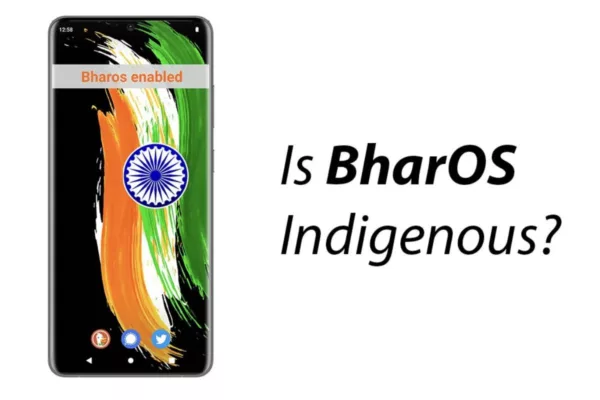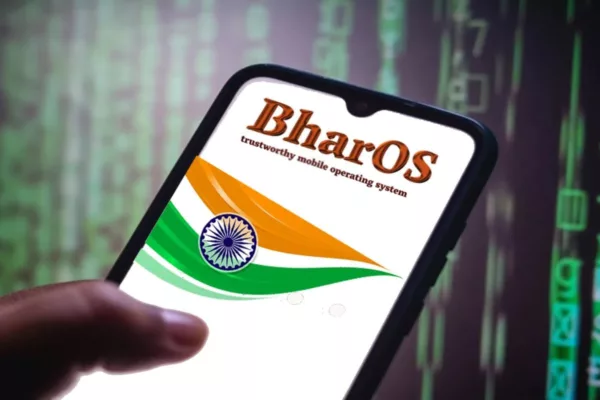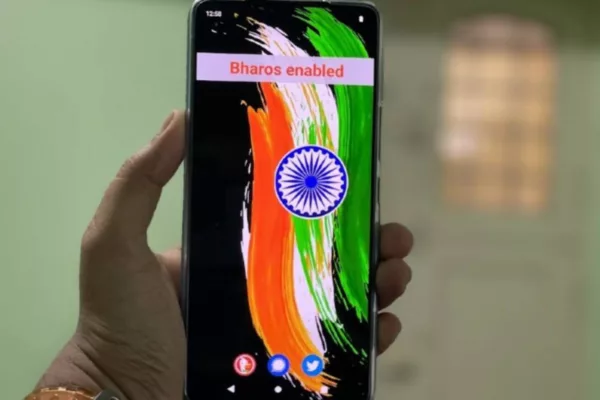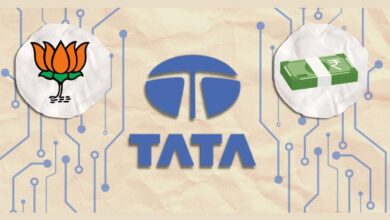BharOS is India’s initial step toward a native mobile operating system.

BharOS is India’s initial step toward a native mobile operating system.
BharOS, a revolutionary mobile operating system with a privacy and security focus, was created by the Indian Institute of Technology, Madras (IIT). The main software interface of a smartphone, such as Android by Google and iOS by Apple, is known as a mobile operating system.
The BharOS is a government-funded industry in India that aims to create a free and open-source operating system (OS) for use in public and governmental systems. By promoting the use of locally created technology, the project hopes to lessen smartphones’ reliance on foreign operating systems.
Establishing a native environment and an independent future is a giant step forward.
According to the developer, the software could be packed on commercially available handsets, giving users access to a safe environment.
Additionally, BharOS has No Default Apps (NDA), which means users are not forced to utilise apps they are unfamiliar with or may not trust. Users would have more discretion, freedom, and flexibility to select and utilise only the apps that suited their needs, according to the institute.

The Linux kernel acts as the foundation for BharOS, which can be installed on a variety of hardware including desktops, laptops, and mobile devices. It was created by JandK Operations Private Limited (JAndKops), an NGO that was founded at IIT Madras. The project is still being worked on, and no release date has been set. BharOS currently has third-party programmes like DuckDuckGo and Signal as its direct browser and chat programme.
BharOS: What is it?
An AOSP (Android Open Source Project)-based operating system called BharOS without any Google programmes or services. It is being created by JandK Operations Private Limited (JandKops), a nonprofit company that was founded at IIT Madras.
What sets BharOS apart from Android?
BharOS and Android are similar in terms of technical details. Based on the Android Open Source Project is this operating system (AOSP). The main difference between BharOS and Google’s Android OS is that BharOS does not come preloaded with Google services, and it allows users to instal apps of their own.
BharOS is based on AOSP, therefore in terms of features, it isn’t much that different from Google’s Android. Additionally, BharOS does not have any pre-installed software. It is unclear how using BharOS will replace a pre-installed OS. No information is provided about how long the BharOS will continue to receive software and security updates.
Furthermore, it’s not clear whether the BharOS development team will work with the OEM to introduce the BharOS-enabled smartphone. BharOS’s innovators have not stated when the OS would be made available for download. There are also no specifics regarding which smartphones will support BharOS.
To launch smartphones running BharOS, however, it is expected that the developers will work with a few smartphone manufacturers.
How may BharOS be installed on a phone?
When the BharOS will be available for download is currently unknown. The BharOS development team must tailor the OS for each smartphone model for it to function properly because, unlike Windows OS, a single build of BharOS cannot be installed on all Android phones. Therefore, at the time of debut, the BharOS might only be accessible for a few phones.
The BharOS team has spoken about the need for an app store-like service, but it will be interesting to see if they collaborate with an existing service or develop it entirely from scratch. When it becomes available, it might be necessary to flash BharOS on an Android smartphone by unlocking the bootloader and installing a custom recovery image. The precise release date for BharOS is currently unknown. According to reports, a wider rollout might take some time.
Your upcoming smartphone will it run BharOS?

On the phones that will feature BharOS, there is yet no confirmation. However, the business is anticipated to collaborate with certain significant Android OEMs to release phones running BharOS shortly. Although developers claim that BharOS is compatible with Google Pixel devices, they have not specified the precise models that would support BharOS.
Is BharOS superior to Android?
Developers of BharOS assert that in terms of features and security, BharOS is superior to both Android and iOS. Furthermore, they contend that BharOS might even lengthen the device’s battery life. Additionally, it will come with an app store headquartered in India and let customers instal programmes of their choice.
Running Android apps on BharOS?
Yes, BharOS is an Android operating system, and it will feature a closed app store in addition to the ability for customers to sideload third-party programmes. A few apps that need Google Play Services will not run on a phone running BharOS, even though it can run the majority of apps.
BharOS is an alternative to Android.
No, it cannot yet replace Android OS. While it may one day serve as a viable alternative to both Android and iOS, there is still a long way to go before it is widely adopted.
The Google Play Services will BharOS support?
No, BharOS was created primarily to provide an alternative smartphone operating system without the Google Play store or Google Play services, and it will not support Google Play Services.
Things to know about BharOS, a mobile operating system created by IT Madras

- The goal of BharOS, a mobile operating system, according to its creators, is to “provide consumers greater freedom, autonomy, and flexibility to choose and use only the programmes that meet their needs.” The way users see security and privacy on mobile devices is expected to change as a result of this ground-breaking technology.
- The advantage of this mobile operating system is that it lacks any default apps (NDA). In essence, this means that, in contrast to Android, consumers will have the largest storage space. Along with some native apps, OEMs preinstall Google apps on phones by default. One won’t be compelled to use BharOS if they don’t want to use apps they don’t know or don’t trust.
- ‘Native Over The Air’ (NOTA) upgrades, similar to those for Android phones, will also be available. According to the creators, NOTA updates are automatically downloaded and installed on the device; users do not need to start the process manually.
- The OS will also provide access to reputable apps via company-specific Private App Store Services (PASS). “A PASS offers access to a selected list of apps that have been carefully examined and have complied with several organisations’ security and privacy criteria. Users can be sure that the apps they instal are secure to use and have been reviewed for any potential security holes or privacy concerns thanks to this, according to the creators.
- Bharat, on the other hand, is only now offered to businesses with strong privacy and security standards, “whose users handle sensitive information that necessitates confidential interactions via limited apps on mobiles.”
Although the new mobile operating system appears to include a lot of features that would make it easier for people to utilise the device in their daily lives, there are no specifics available. For instance, Android provides battery statistics, notification settings, home screen widgets, customisation options, and privacy features. When it is accessible to everyone, we will understand this issue more clearly. OS will continue to be restricted to particular businesses, the creators have stated in the statement.
edited and proofread by nikita sharma




